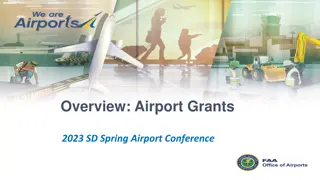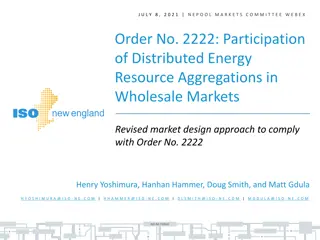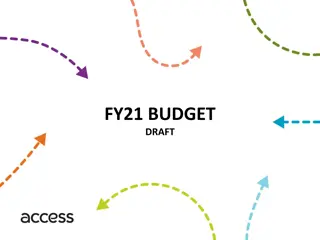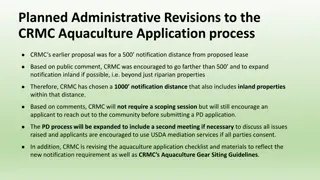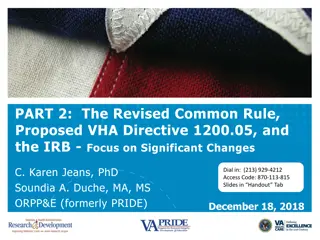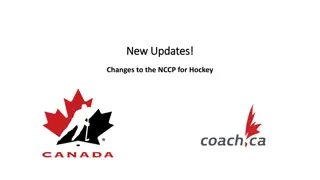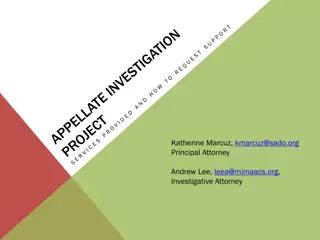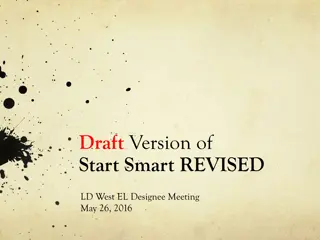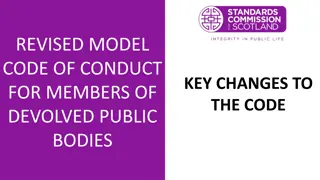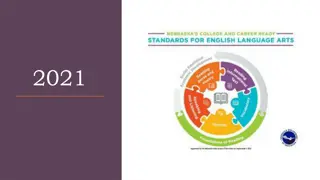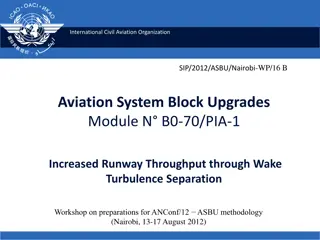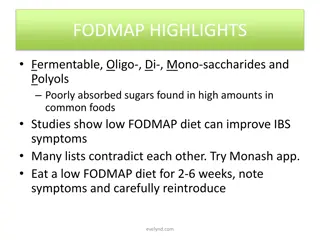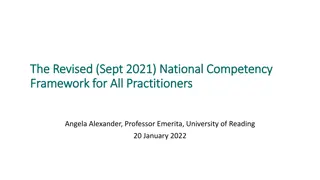
The Difference Between Interest and Commitment
Discover the distinction between interest and commitment in this insightful article by Kenneth Blanchard. Learn why commitment involves accepting no excuses, only results, while interest tends to be convenient. Explore the significance of commitment in achieving goals and results.
Download Presentation

Please find below an Image/Link to download the presentation.
The content on the website is provided AS IS for your information and personal use only. It may not be sold, licensed, or shared on other websites without obtaining consent from the author. If you encounter any issues during the download, it is possible that the publisher has removed the file from their server.
You are allowed to download the files provided on this website for personal or commercial use, subject to the condition that they are used lawfully. All files are the property of their respective owners.
The content on the website is provided AS IS for your information and personal use only. It may not be sold, licensed, or shared on other websites without obtaining consent from the author.
E N D
Presentation Transcript
Western View COMMITMENT There is a difference between interest and commitment. There is a difference between interest and commitment. When you are interested in doing something, you do it only when it is convenient. When you are interested in doing something, you do it only when it is convenient. When you are committed to something, you accept no excuses, only results. When you are committed to something, you accept no excuses, only results. Kenneth Blanchard
Preparation of Annual Investment Program (AIP) for Provinces, Cities, Municipalities for FY 2016 Updates on Local Government Budgeting Crown Regency Hotel, Quadalupe, Cebu City June 8-10, 2015 ABSAL NAZ ABAH Budget and Management Specialist
Outline Background New Issuances Local Budget Memorandum No. 68 DBM-CCC-DILG JMC No. 2014-1 Revised Form of the AIP Program, Project and Activity Structure
Background (key documents) In 2007 Joint Memorandum Circular (DBM, NEDA, DILG, DOF) No 1 series of 2007 was issued as NGA initiative in local planning and budgeting serves as guide in harmonization of local planning, investment programming, revenue administration, budgeting and expenditures management
Background (key documents) Planning and budgeting linkage is institutionalized in the LGUs This linkage is provided through the concept of the Annual Investment Program (AIP)
WHAT CONNECTS PLAN TO BUDGET? Social Services Economic Services General Services PLAN BUDGET AIP
What is an ? annual slice of the LDIP which constitutes the total resource requirements for all programs/projects/activities yearly program of expenditures both for capital and current operating requirements of the LGUs document that reinforces plan- budget linkage
PREPARING the AIP KEY PLAYERS 1. Local Development Council (LDC) 2. Local Planning and Development Coordinator (LPDC) 3. Local Budget Officer (LBO) 4. Local Chief Executive (LCE) 5. Local Sanggunian (SP/SB) 6. NGOs, Civil Society Groups and Other Stakeholders
PREPARING THE AIP: Roles of Key Players Local Development Council Cull out the current slice of the LDIP as input and annual component of the Capital Expenditure (CAPEX) into the AIP Summary Form Determine the annual resource requirements of Priority development projects of the AIP. Align development plan with current development issues
PREPARING THE AIP: Roles of Key Players Local Planning Development Coordinator Updates the AIP to consider new and unimplemented PPAs. Consolidate the PPAs of every Department. How to update?
PREPARING THE AIP: Roles of Key Players Local Budget Officer Integrate the CAPEX with the PS, MOOE and Other CO into the total resource AIP to be reflected in the AIP Summary Form.
PREPARING THE AIP: Roles of Key Players Local Chief Executive Present the AIP Summary Form to the LDC for deliberation and concurs with the AIP Summary Form as agreed upon by the LDC.
PREPARING THE AIP: Roles of Key Players Sanggunian Approve the AIP.
PREPARING THE AIP: Roles of Key Players NGOs, Civil Society Groups and Other Stakeholders Serve as key informants on major development issues in the LGU. Provide relevant information in the identification and prioritization of PPAs for inclusion in the AIP.
The AIP Process Flow Chart LDC Aligns Dev Plan/ELA (PDPFP/CDP) with current development issues LPDC updates AIP to consider new and unimplemented PPAs LDC prepares Draft AIP and presents to LCE for review LDC determines annual resource requirements of priority development projects from LDIP LBO determines resource requirements of PPAs for Basic Services Delivery and Administrative/ Legislative Services LDC deliberates on/ endorses AIP to Local Sanggunian LCE presents AIP to LDC for deliberation Local Sanggunian approves AIP for the Budget Year
Annex A Summary Form CY ______ Annual Investment Program (AIP) By Program/Project/Activity by Sector As of _______________________ Province/City/Municipality/Barangay:________________________ AMOUNT (in thousand pesos) Maintenance and Other Operating Expenses (MOOE) SCHEDULE OF IMPLEMENTATION IMPLEMENTING OFFICE/DEPARTMENT (3) EXPECTED OUTPUTS (6) FUNDING SOURCE (7) Personal Services (PS) (8) AIP REFERENCE CODE (1) PROGRAM/PROJECT/ACTIVITY DESCRIPTION (2) STARTING DATE (4) COMLETION DATE (5) Capital Outlay (CO) (10) TOTAL (11) General Public Services (10) AIP Summary Form Economic Services (80) Social Services (30) Prepared By: Attested by: Planning Officer/PLDC Date: Budget Officer Date: _____________ Local Chief Executive Date: _______________
New Issuances Local Budget Memorandum No. 68 dated July 1, 2014 provides that: Together with the General Annual Budget, LGUs shall prepare their respective Local Disaster Risk Reduction Management Plans (LDRRMP) and Local Climate Change Action Plan (LCCAP) LGUs shall be encouraged to identify, tag and prioritize climate change programs, activities and projects (P/A/Ps). Guidelines for the purpose shall be issued separately
New Issuances Joint Memorandum Circular No. 2014-1 (DBM- CCC-DILG) dated August 7, 2014: (Tagging/Tracking Climate Change Expenditures in the Local Budget) To identify, tag and prioritize climate change programs, activities and projects (PAPs) by all Departments and Offices of LGUs; To take stock of climate change programs, activities and projects and to track and report climate change expenditures of LGUs
Joint Memorandum Circular No. 2014-1 (DBM-CCC-DILG) dated August 7, 2014: LGUs are encouraged to increase budgetary allocations for basic services and facilities responsive to climate change to improve the adaptive capacity of communities and reduce adverse impact of climate change All climate change related strategies and investments of the LGUs in the AIP shall be identified as follows: Adaption responses Mitigation responses
Joint Memorandum Circular No. 2014-1 (DBM-CCC-DILG) dated August 7, 2014: To tag climate change expenditures in the AIP, the following shall be undertaken: Identify P/A/Ps with climate change adaptation and mitigation expenditures; Identify the components of the P/A/Ps that are adaptation or mitigation responses using the Climate Change Typologies Specify the amount of climate change component
Joint Memorandum Circular No. 2014-1 (DBM-CCC-DILG) dated August 7, 2014: LGUs who do not have any P/A/Ps that can be tagged as climate change adaptation/mitigation can enter : No identified climate change related expenditures For Provinces, Cities and Municipalities: Ensure that climate change is integrated in the budget call issued by the LCE; Identify climate change expenditures in their Annual Investment Programs (AIP) using the CCE typologies Tag identified CCE in their AIP using the revised AIP form (Annex B)
Joint Memorandum Circular No. 2014-1 (DBM-CCC-DILG) dated August 7, 2014: Accomplish and submit to DILG and DBM the list tagged climate change P/A/Ps during the annual submission of the budget proposals; Ensure the integration of climate change PAPs in the LGU budget proposals of department during the technical budget hearing of the Local Finance Committee (LFC) and the LCE;
Joint Memorandum Circular No. 2014-1 (DBM-CCC-DILG) dated August 7, 2014: For PAPs that do not qualify under the Climate Change Typologies listed in Annex A, request CCC to create a new typology; The CCET will be implemented by all LGUs in FY 2016
(4) (6) (7) (3) (5) (2) (1)
AMOUNT OF CLIMATE CHANGE P/P/A AMOUNT Climate Change adpatat ion Climate Change Typology code Climate Change mitigatio n (13) PS (12) (11) (8) (9) (10) (14)
Climate Change Adaptation: - adjustments in human and natural systems in response to actual or expected climate signals or their impacts, that moderate harm or exploit beneficial opportunities.
Climate Change Mitigation: - in the context of climate change, refers to human intervention to address anthropogenic emissions by sources and removals by sinks of all GHG, including ozone-depleting substances and their substitutes
Human Security (Health): Adaptation Develop and introduce health surveillance and rapid response system that reduces health impact of climate change Mitigation Interventions that reduce air pollution (e.g., anti- smoke belching campaign)
Fisheries (Policy & Governance): Adaptation Formulate/implement ordinances on protection of mangroves Mitigation Introduce ordinances to reduce the emission of GHGs or absorption of GHGs in the fishery sector
Water sufficiency( water sanitation): Adaptation Training for community- based water associations to managed water supply infrastructures Mitigation Train Managers or workers to improve water or energy efficiency in business operations
Climate change Typologies for LGUs: Strategic priority : 1. Food Security 1. Agriculture 2. Livestock 3. fisheries 2. Water Sufficiency 3. Ecological and environmental Stability 4. Human Security 5. Climate smart Industries and Service 6. Sustainable energy 7. Knowledge and Capacity Development 8. Finance 9. Cross Cutting Priorities
Programs/Project/Activities (major component of the AIP):
PPA Structure Review existing PPA structure Analyze Results/ Outputs of PPAs Policy Objectives Yes/No Status Quo Relevant to or consistent with If Yes If No Redesign Program Structure Determine Causes
PPA Structure The review of existing program should ascertain the relevance of present operations to the wider policy objectives of the LGU; Evaluation of PPAs structure to determine the program s capacity to produce desired result; Performance indicator shall be identified to served as bases for measuring performance.
PPA Structure Redesigning current PPA structure: (regular activities or projects of a specific program): Step 1. Review the existing regular activities or projects of a specific program. What are the objectives of the program? Are the projects/activities relevant to the mission? What are the output indicators of the program? Are the results consistent with the program objectives? What activities/projects must be redesigned/abolished?
PPA Structure Redesigning current PPA structure: (organization structure) Step 2. Design the proper organization structure that will best carry out the program objectives. What are the tasked to be performed? What is the optimum number of personnel that can carryout tasks efficiently and effectively? What qualifications are required of personnel to perform the tasks well?


